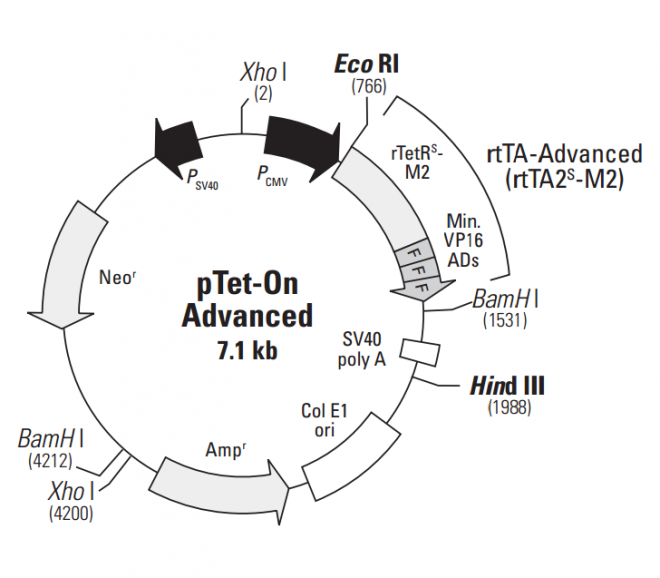
|
品牌 |
酶研生物 | |||||||||||||
货号 |
MY1603 | |||||||||||||
规格 |
2ug | |||||||||||||
价格 |
询价 | |||||||||||||
货期 |
现货 | |||||||||||||
pTet-On-Advanced expresses an improved version of the reverse Tet (tetracycline)-controlled transactivator protein (rtTA), called rtTA-Advanced (1–4). It is more sensitive to doxycycline (Dox) and yields lower background expression than the original rtTA used in the Tet-On® System (2). The rtTA-Advanced protein is a fusion of amino acids 1–207 of a mutant Tet repressor (TetR) and 39 amino acids containing three minimal "F"-type transcriptional activation domains from the VP16 protein of herpes simplex virus. It is fully synthetic, lacks cryptic splice sites, and is codon-optimized for stable expression in mammalian cells. 载体应用The pTet-On-Advanced Vector is used to develop stable Tet-On Advanced cell lines, which are hosts for a Dox-induced gene expression system. Once a vector containing a gene of interest under control of a Tet-responsive element (e.g., TRE-Tight or TRE2) is transfected into a Tet-On Advanced cell line, rtTA-Advanced binds to the TRE, and activates transcription of the gene of interest in the presence of Dox in a highly dose-dependent manner. Additional information on TRE-containing vectors and protocols describing the construction of Tet-On Advanced cell lines can be found in the Tet-On Advanced Inducible Gene Expression System User Manual (PT3898-1).
|
|
|||||||||||||










